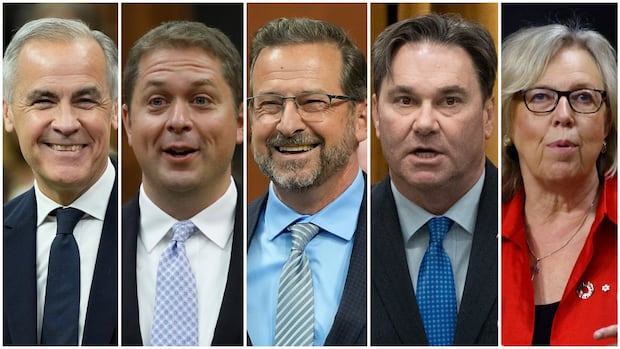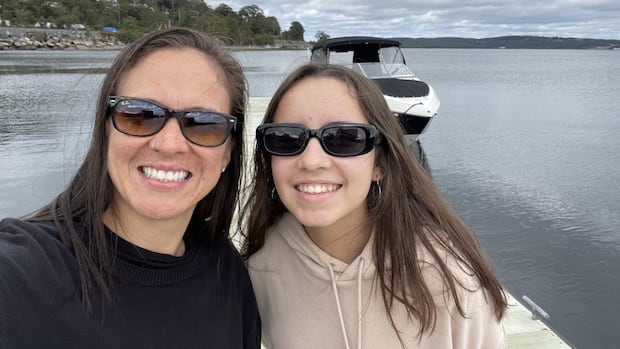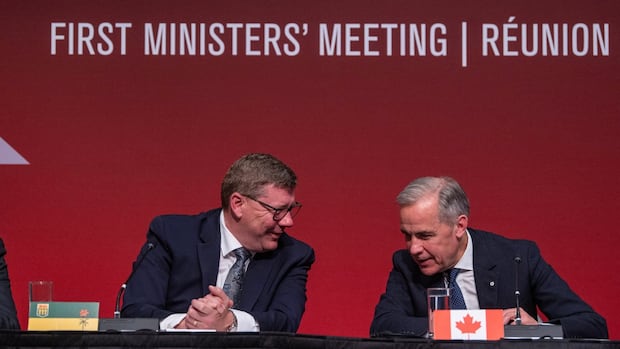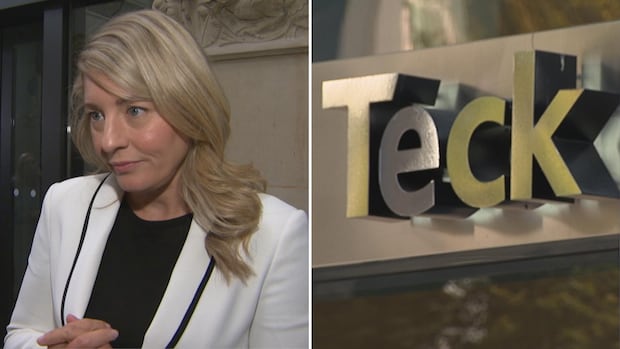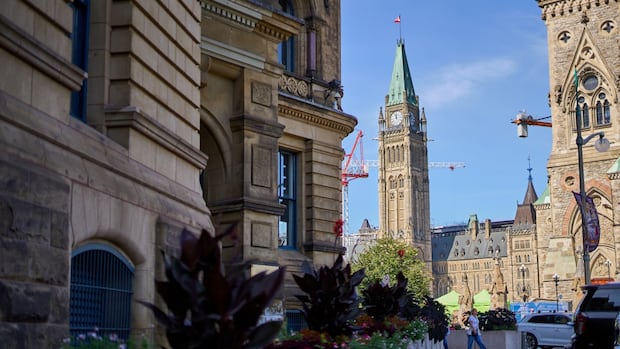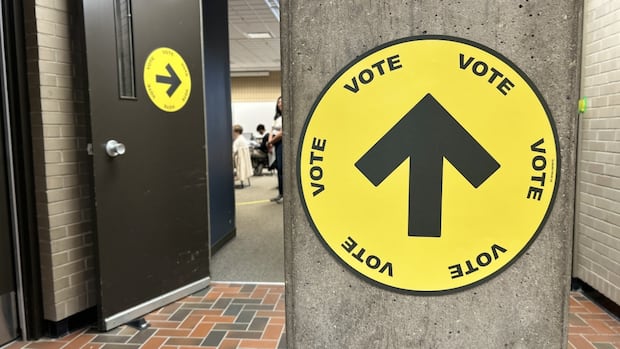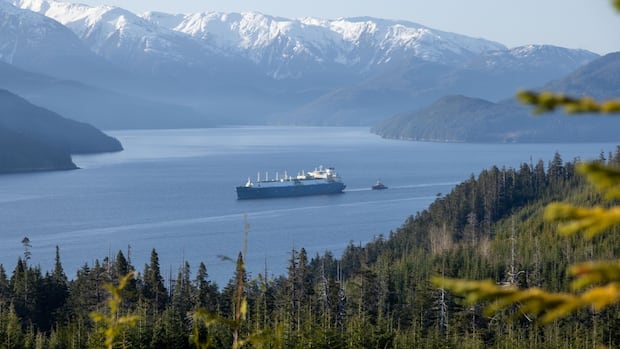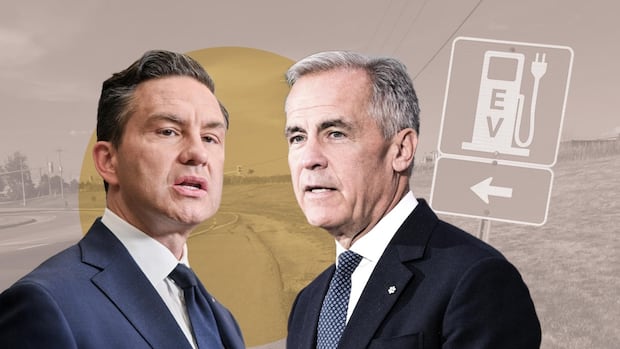The federal government announced this week the five major projects it intends to fast-track. Now, Energy Minister Tim Hodgson is pushing back against Conservative critiques that the list is nothing special because some projects were already well in development.
"You've got to execute and punch the ball into the end zone," Hodgson said in an interview on Rosemary Barton Live that aired Sunday morning.
To continue his football analogy, Hodgson told host Rosemary Barton he would "describe these five projects as being down in the red zone" — the area of a football field close to the goal line.
"The Major Projects Office is there to help make sure each of these proponents punches the ball into the end zone, scores a touchdown and builds for Canada."
On Thursday, Prime Minister Mark Carney announced the initial tranche of projects the federal government will help get off the ground quickly, including expanding liquefied natural gas (LNG) production in B.C., upgrading the Port of Montreal and building a copper mine in Saskatchewan.
 The Maran Gas Roxana LNG carrier navigates its way through the Douglas Channel to Kitimat, B.C., on Wednesday, April 2, 2025. (LNG Canada)
The Maran Gas Roxana LNG carrier navigates its way through the Douglas Channel to Kitimat, B.C., on Wednesday, April 2, 2025. (LNG Canada)Carney said the proponents have already done a lot of the hard work, including consultation with Indigenous communities, provinces, territories and local authorities. He said the projects already meet many required regulatory standards but need an extra nudge.
That's not good enough for Conservative Leader Pierre Poilievre, who told CBC's The House on Friday that Carney has "now been prime minister for six months — hard to believe — and he hasn't delivered a permit for a single nation-building project."
"So far he's succeeded at setting up an office with one employee, and he sent a list of five projects that were already approved or almost approved before he got there," Poilievre said. "And now he's picking up the football in the end zone to spike it."
In response to the criticism, Hodgson said "every one of the proponents seem to be very pleased that they're on the list" and in his experience, many projects can fail right before the end.
WATCH | Poilievre calls for more liquefaction plants in sit-down interview with The House: Conservative Leader Pierre Poilievre, speaking with CBC’s Catherine Cullen on Friday morning, says building more liquefaction plants to process Canadian natural gas and increasing international buyers, specifically in Asia, could help reduce global emissions.The B.C. liquefied natural gas project on Carney's list, known as LNG Canada Phase 2, is based within the traditional territory of Haisla Nation. Chief Councillor Maureen Nyce told Barton her community is excited the project is on the federal government's radar.
"We need jobs in our community — not only jobs that construct these facilities — we need jobs that are lasting," Nyce said. "We need businesses that can prosper from spin-offs from this project."
Nyce also said she believes more investors will come forward to support the project now that it has Carney's stamp of approval.
Dan Myerson is the CEO of Foran Mining, which owns the Saskatchewan copper mine project that was also in Carney's top list.
 Foran Mining's McIlvenna Bay project in northeast Saskatchewan is slated to begin production in mid-2026. (Foran Mining)
Foran Mining's McIlvenna Bay project in northeast Saskatchewan is slated to begin production in mid-2026. (Foran Mining)Myerson told The House not much changes for his project "in the immediate term" with Carney's approval, but the mine may need extra permits to expand — and that's where the federal government's projects list kicks in.
"You can get a lot more certainty in the process there. And that's very, very valuable with making these big decisions on financing and investing these huge amounts of capital for these expansions," Myerson said.
The Foran Mining CEO added that mining is a "capital intensive industry when you get started" and he's hopeful the federal government expands critical mineral investment tax credits because they can have "such a meaningful impact for our project and our company and our future growth in Canada."
Alongside the top five projects, Carney announced a raft of other proposals his government is interested in fast-tracking but they need more time and further development.
One of those projects is Alto High-Speed Rail, Canada's first high-speed railway that would connect Toronto to Québec City. The project was officially announced by former Prime Minister Justin Trudeau shortly before he left office.
Alto CEO Martin Imbleau told The House he doesn't see his project as being on the "B-list."
Watch | Trudeau says high-speed rail is coming to Canada:Prime Minister Justin Trudeau, speaking from Montreal on Wednesday, announced a plan for a 1,000 km high-speed rail network connecting Quebec City and Toronto — and took a question about what makes this announcement different after decades of discussion about the possibility of a high-speed rail corridor in the densely populated region.Instead, Carney's announcement gives his company an indication that when it's ready to start the approval process, it'll have a timeline that's "more definite and certain."
In the meantime, Imbleau said his company is committed to consulting with Indigenous communities and other groups along the proposed pathway and doing environmental assessments.
"The government is now saying: 'Once you file your stuff, in two years you get your approval,'" Imbleau said.
The second tranche of projects, Carney said on Thursday, will be finalized before the Grey Cup in Winnipeg on Nov. 16.


